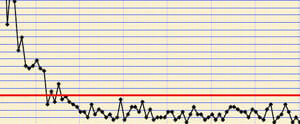Building a New Home?
Building a New Home? Don’t Forget to Put Radon on Your Checklist.
By: Cherie Summa, PE
St. Louis Radon Test and Mitigation
There are so many things to consider when building a new home - so many choices to make. How many bedrooms do you need? Is the kitchen large enough? Do you want upgraded appliances? But are you concerned about radon? If not, you should be.
What You Should Know about Radon
Radon is a radioactive gas that comes from the soil. After smoking, long term exposure to radon gas is the second-leading cause of lung cancer in the United States. About 21,000 people die each year from radon-related lung cancer.
Radon is produced from the natural breakdown of the uranium found in most rocks and soils. As it further breaks down, radon emits atomic particles. These particles are in the air we breathe. Once inhaled, they can be deposited in our lungs. The energy associated with these particles can alter cell DNA, thus increasing the risk of lung cancer.
Radon usually does not present a health risk outdoors because it is diluted in the open air. Radon can, however, build up to dangerous levels inside a house.
Radon is an issue throughout Missouri. The state’s Department of Health and Senior Services says that more than 25% of all Missouri homes exceed the EPA’s action level of 4 picocuries per Liter (4.0 pCi/L). Illinois has estimated rates greater than 40%.
St. Louis Radon recently tested a home with average readings above 100 pCi/L. Another house we recently tested came back at 12 pCi/L. The elderly woman living there for the past fifteen years had never smoked, but she nonetheless developed stage 4 lung cancer. Years of breathing such high levels of radon gas was likely the primary factor to her developing cancer. Families can prevent such tragedies by taking proactive steps to reduce and eliminate radon gas in their newly built home.
Whether you are a realtor representing a buyer, a builder, or an buyer looking to build, any new home construction plans in Missouri should include either testing immediately after construction is complete, installing a radon system during construction or installing a passive radon system during construction.
Radon Mitigation for Custom New Construction Homes
While St. Louis Radon can retrofit any home, school or business with a custom-designed radon mitigation system, there are many benefits to building with radon prevention in mind. Planning for radon mitigation in advance removes some of the trickier obstacles to retrofitting. The radon mitigation vent pipe is built directly into the framework of the house. This also allows us to hide the pipe within the walls, rather than having it run up the exterior wall of a house.
Radon Mitigation for New Construction
If you are a home builder, you are surely aware that many real estate transactions in this area now include a radon test as a contingency in an offer to purchase. Installing a radon mitigation system after the house is built, but before closing or shortly thereafter, not only saves the homeowner significant cost, but it also:
• Adds to the appeal of the homes you build.
• Enhances your reputation as a home builder and ensures there won't be any snags in the real estate transaction.
• Provides environmental advantages. Radon ventilation systems remove as much as a gallon of water from below the home every two hours, preventing growth of mold and bacteria which trigger allergies and illness. Because of the reduced moisture in the air, these homes also tend to run their energy-consuming dehumidifiers less frequently.
Passive Radon Systems Installed During Construction
Another option is to install a passive radon system during construction. The first step in optimizing new home construction for radon mitigation is laying four inches of gas-permeable material--typically gravel--below the foundation. Once poured and cured, the basement is sealed to be gas-tight, and PVC piping is run through the framework of the home out through the roof.
Due to the negative pressure effect of your home, this venting alone may be enough to keep your home’s radon gas levels below the EPA action level. The home should be tested after occupancy and the system should be activated (fan powered) if post-occupancy testing reveals radon levels at or above 4 pCi/L. Installing an exhaust fan is an easy and inexpensive addition which can be done by a licensed radon mitigation professional.
Testing a New Construction Home
The best time to conduct a radon test is immediately after a home is built - before anyone has lived in the home! If the results are elevated, some builders will pay to have a radon mitigation system installed. If a mitigation system is not part of your home new home contract you are better off waiting to test after you move in. Conducting the radon test after closing ensures that closed-house conditions are maintained and therefore more reliable results.
The challenge with new construction is finding a good testing period when the house can be kept closed. Weekends are almost always the builder/project manager's preferred testing period, as contractors are less likely to be in the home on Saturdays and Sundays.
We typically conduct the test the last weekend before closing (or perhaps two weekends before closing if the house is complete in advance). We need the house to be as complete as possible, with the HVAC system operating normally, the weatherstripping installed on exterior doors, and most importantly free of contractors. We typically set up the radon test during the day on Friday and set it on a 12-hour delay to begin late Friday night/early Saturday morning. The test automatically shuts off after the 48-hour testing period, and we return Monday to pick up the equipment from the home.
St. Louis Radon welcomes the opportunity to speak at real estate office, HOA and PTA meetings. We can be reached at 636-200-2875 or stlradon.com.




